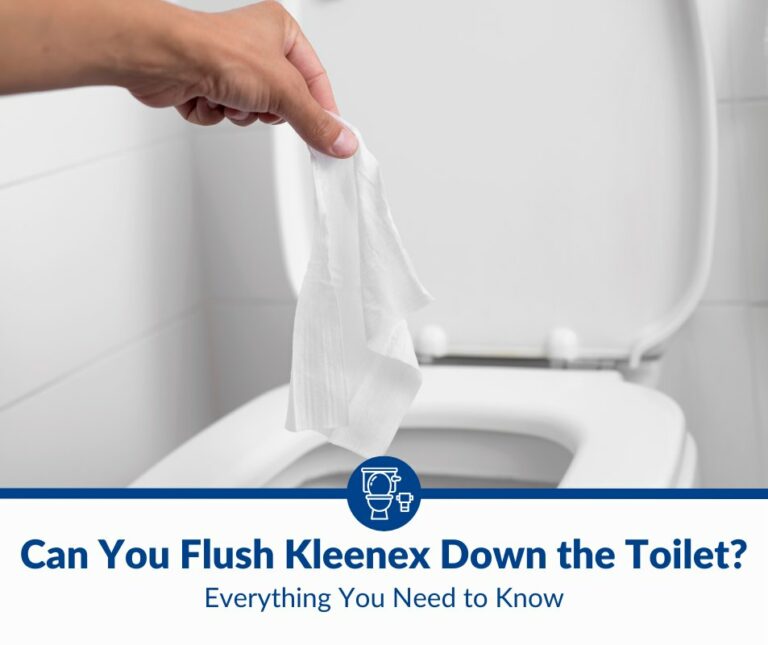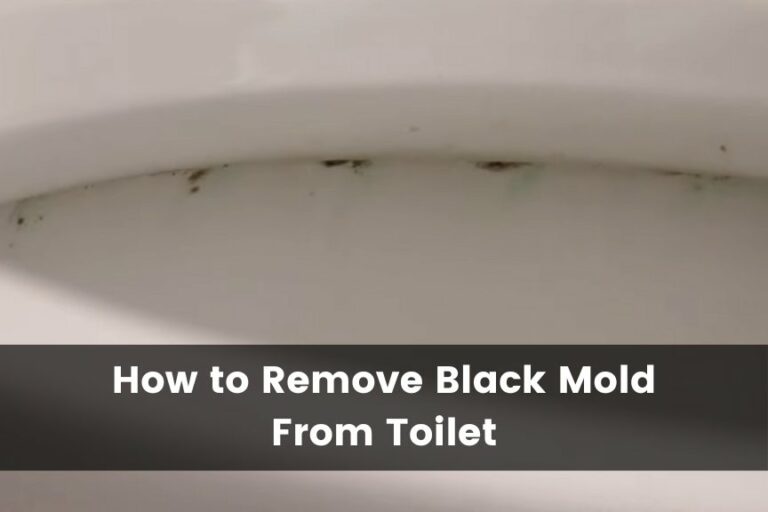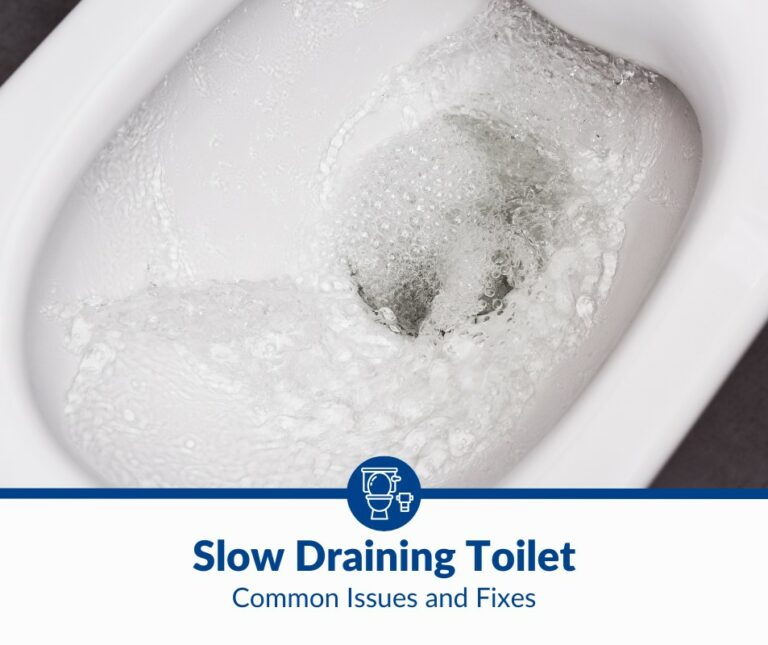How To Remove an Object From the Toilet Trap (5 Simple Ways)
Removing an object from a toilet trap can be daunting, especially if you’re unfamiliar with plumbing. However, it’s important to keep your plumbing functioning correctly and prevent any potential damage. There are several ways to do this, all of which are relatively easy and safe.
You can remove an object from the toilet trap using a toilet plunger, auger, wire hanger, or a pair of tongs or pliers. These tools can help you reach into the trap and remove stuck objects. Contact a professional plumber if these methods fail to dislodge the object from the trap.
Objects getting stuck in the toilet trap is a common plumbing problem that can happen to anyone. While it’s never a good thing, the toilet trap is actually performing its job in this scenario. This curved pipe is designed to prevent sewer gas from entering your home as well as prevent larger objects from entering your piping system. When an object becomes lodged in it, it can cause blockages, foul odors, and even sewage backup.
To avoid these plumbing issues, it is important to safely and effectively remove the object from the toilet trap. Attempting to use force or sharp tools to remove the object can damage the toilet trap and cause leaks or breakages. Instead, you can use several simple methods to remove the object from your toilet trap safely.
1. Use a Toilet Plunger
A plunger is commonly used to remove objects from the toilet trap. This tool is designed to create an airtight seal on the toilet drain and can push or pull objects out of the trap.
Materials Needed
- Plunger
- Gloves (optional)
Step-by-Step Instructions for Using a Plunger To Remove the Object
- Wear gloves (if desired) to protect your hands from hazards like dirty water or germs. Gloves are especially important if the object you are trying to remove is unsanitary or if you’re not sure what the object is.
- Check the water level in the toilet bowl. Before proceeding, ensure the water level is high enough to cover the plunger cup. If the water level is low, add water to the bowl so the plunger can create a seal. This is crucial, as the seal created by the plunger is necessary to dislodge the object from the trap.
- Insert the plunger into the toilet bowl. The plunger should cover the entire opening of the trap to create an airtight seal.
- Push down and pull up on the plunger handle to create suction. Push and pull several times, with the plunger firmly pressed against the toilet drain, to try and dislodge the object. It may take a few minutes of plunging to remove the object. You should feel resistance as the object begins to move and then a release as it comes free from the trap.
- Flush the toilet. Once the object has been removed, flush the toilet until the water is clear. This will ensure that any debris or waste has been washed away and the plumbing system is functioning correctly. Observe the water level and the flushing process. If the water level seems too high, the flushing isn’t complete, or if the water in the toilet bowl doesn’t clear up quickly, repeat the plunging process to dislodge the remaining objects.
- Inspect the trap to ensure that all debris has been removed. Look for any signs of damage or leakage in the trap, and check to ensure that the object has been completely removed.
- Clean the plunger and the area around the toilet bowl. Once all debris has been successfully removed, it’s important to clean the plunger and put it back in storage. You should also clean the area around the toilet and dispose of any debris or water that may have been spilled during the process.
Tips for Maintaining and Using a Plunger Effectively
Using a plunger effectively and maintaining it properly can make removing an object from a toilet trap much easier.
Here are some tips to help you get the most out of your plunger:
- Keep your plunger in good condition. Clean the plunger after each use by rinsing it with warm soapy water and drying it thoroughly. Avoid storing the plunger in damp or humid areas, as this can cause the rubber to deteriorate.
- Check the water level. Before using the plunger, ensure enough water is in the toilet bowl to create a seal. A seal is necessary for the plunger to create suction and dislodge the object from the trap, so if the water is too low, you won’t be able to remove the object.
- Position the plunger correctly. Ensure the plunger is positioned correctly over the hole at the bottom of the toilet bowl.
- Use a proper technique. When plunging, use a forceful, consistent motion to create suction. Removing the object may take a few minutes of plunging, so don’t get discouraged if it doesn’t come free immediately.
2. Use a Toilet Auger
Another tool that can be used to remove an object from the toilet trap is a toilet auger. This tool consists of a flexible coil attached to a handle and works by inserting the coil into the toilet trap and then pushing or pulling the handle to dislodge any objects.
It’s an effective method for removing objects from the toilet trap and can be used in cases where plunging is not successful.
Materials Needed
- Toilet auger
- Gloves (optional)
Step-by-Step Instructions for Using a Toilet Auger To Remove the Object
- Put on gloves to protect your hands from any potential hazards, such as dirty water. This step is optional, but it’s always good to have extra protection from any germs or bacteria that may be present in the toilet trap.
- Extend the toilet auger’s cable from the auger’s handle. Insert the cable into the toilet trap, feeding it through until you feel resistance. This resistance is the auger’s head, designed to help dislodge the object blocking the trap.
- Begin turning the auger’s handle. This will force the head of the auger down into the trap and may help to dislodge the object. Turn the handle clockwise to feed the cable further into the trap. This step is important, as it allows the auger’s head to push through the blockage and dislodge the object.
- Apply moderate pressure. Once you feel that the auger head is pushing against the object, continue turning the handle in a clockwise direction while applying medium pressure. This should help to dislodge the object from the trap. Turn the handle until you feel the resistance from the object decreasing, indicating that the object is being moved or removed.
- Keep turning the handle and applying pressure until the object is removed or the auger’s cable is fully extended. This step may take time and effort, so be patient and persistent.
- Remove the auger’s cable carefully from the toilet trap. Once the object has been removed, or the auger’s cable is fully extended, slowly and carefully remove the auger’s cable. Keep a firm grip on the object, careful not to drop it or let it fall back into the toilet trap.
- Flush the toilet. After removing the object, flush the toilet to confirm that it is now unblocked. Observe the water level and the flushing process. Repeat the augering process if the water level seems too high, or the flushing is incomplete.
Tips for Maintaining and Using a Toilet Auger Effectively
- Keep the auger clean. Clean it after each use by wiping it down with a damp cloth and drying it thoroughly.
- Store the auger properly. Avoid storing the auger in damp or humid areas, as this can cause the cable to rust or corrode. Store it in a dry, safe place that is easily accessible.
- Extend the cable. Ensure to extend the cable of the auger fully before inserting it into the toilet trap. This will give you maximum reach and help you dislodge the object more effectively.
- Use a clockwise motion. When turning the auger’s handle, using a clockwise motion to feed the cable further into the trap will help the auger’s head push through the blockage and dislodge the object.
- Apply moderate pressure. When turning the handle, apply moderate pressure to help dislodge the object. Too much pressure can cause the auger to bend or break, so use caution and ensure to apply just the right amount of pressure.
- Keep the auger in good condition. Regularly check the condition of the auger’s cable and handle. If the cable is frayed or the handle is loose, it’s time to replace the auger.
3. Use a Wire Hanger
While using a toilet plunger or auger may seem like the more logical and effective choice, in a pinch, you can also use a wire hanger to help remove an object from your toilet’s trap.
Materials Needed
- Wire hanger
- Gloves (optional)
- Needle nose pliers (optional)
Step-by-Step Instructions for Using a Wire Hanger To Remove the Object
- Straighten the wire hanger. Begin by straightening out a wire hanger and creating a hook at one end using needle-nose pliers or your hands. The hook should be large enough to fit around the object blocking the toilet trap and the rest of the hanger should be straightened out.
- Gently guide the wire hanger into the trap. Push the wire hanger’s hook into the toilet trap, being careful not to scratch or damage the porcelain surface. Ensure that it’s far enough and the hook can fit around the object.
- Maneuver the wire hanger to grab the object blocking the trap. Gently move the wire hanger to try and grab onto the object, being mindful not to push it further down. This step may take time and effort, so be patient and persistent.
- Use gentle pressure to pull the object out. Once you feel that the wire hanger’s hook is securely around the object, carefully pull the wire hanger back out of the toilet trap. If possible, use gloves to avoid getting your hands wet and dirty.
- Flush the toilet and check for blockage. After successfully removing the object, observe the flushing process. If the object has been completely removed and the water level looks normal, you successfully unblocked your toilet.
Tips for Straightening and Shaping the Wire Hanger for Optimal Use
- Be careful when straightening the hanger. Be gentle and move slowly as you straighten out the wire hanger, as it might snap if too much pressure is applied.
- Create a hook at the end of the hanger. To make it easier to grab onto the object, create a hook at the end of the wire hanger using a pair of needle nose pliers. This will make it much easier to maneuver and grab onto the object blocking the trap.
- Choose an appropriately sized wire hanger. Select a larger-sized wire hanger, so you have more metal to work with. The strength of the wire hanger also matters, so choose one that is thick enough to ensure it won’t break when you’re maneuvering and pulling out the object from the trap.
- Use caution when using a wire hanger in a toilet trap. Be mindful not to scratch or damage the porcelain surface of the toilet with the wire hanger.
4. Use a Pair of Tongs or Pliers
If you find a toilet plunger, auger, or wire hanger ineffective in removing the object from your toilet’s trap, you can also use a pair of tongs or pliers. This method requires more precision and care, so take extra caution when using this method.
Materials Needed
- Tongs or pliers
- Rubber gloves (optional)
Step-by-Step Instructions for Using Tongs or Pliers To Remove the Object
- Prepare the area. Before you begin, turn off the water supply to the toilet by turning the knob or valve located behind the toilet. This will prevent water from flowing into the toilet while you’re working on it.
- Put on a pair of gloves to protect your hands from any dirt or germs that may be present on the object or in the trap.
- Use tongs or pliers. Carefully insert the tongs or pliers into the trap and try to grab the object. Be careful not to push the object further down the pipe. If you’re having trouble getting a grip on the object, try using the pliers to rotate it, so it is in a better position to grab it.
- Remove the object. Once you have a good grip on the object, slowly pull it out of the trap. Keep a steady grip on the object as you remove it to prevent it from falling back into the trap.
- Turn the water supply back on. After removing the object, turn the water supply back on and flush the toilet to remove any debris or dirt that may have accumulated.
Tips for Choosing the Right Tool for the Job and Using it Safely
- Consider the shape and size of the object. Different objects require different tools to be safely and effectively removed from the trap. A pair of tongs is better suited for grabbing and removing large objects, while a pair of pliers may be more suitable for smaller objects.
- Be careful when using tongs or pliers. Take extra care not to scratch or damage the porcelain surface of the toilet with tongs or pliers.
- Be mindful not to push the object further down the pipe. This can often happen when grabbing objects with tongs or pliers.
5. Call a Professional Plumber
If you’re having difficulty or can’t remove the object from your toilet trap, it may be best to call a professional plumber. A plumber will have the necessary equipment and expertise to safely and effectively remove any object from a toilet trap.
When To Consider Hiring a Professional Plumber To Remove the Object
- If the object is large. If the object is too large to be removed with a toilet plunger, auger, wire hanger, tongs, or pliers, then it’s best to call a professional plumber.
- If you’re unable to remove the object yourself safely. If you’re having difficulty or unsure how to safely remove the object from your toilet trap, then it’s best to call a professional plumber. This is also true if you would rather not risk damaging your toilet or plumbing system and avoid costly repairs.
- If you’re worried about proper hygiene. Professional plumbers have the proper tools and skills to remove objects stuck in the toilet trap without compromising their hygiene or damaging the toilet’s material.
Tips for Finding a Reputable Plumber in Your Area
Although it may be tempting to call the first plumber you find, it’s important to do some research and find a reputable plumber in your area.
Here are some tips for finding a reputable plumber in your area:
- Ask your family and friends. They may have had an experience with a reputable plumber in the area.
- Read online reviews. Check out online review sites such as Yelp or Angie’s List to get an idea of which plumbers are highly rated in your area.
- Check the website of the plumber. Most reputable plumbers will have a website that provides information about their services and qualifications.
- Check for licensing and insurance. Ensure that the plumber you choose is licensed and insured.
Preventing Future Toilet Clogs
Preventing future clogs in your toilet is essential for maintaining a healthy plumbing system and avoiding potentially costly repairs.
Here are some tips for avoiding flushing inappropriate objects down the toilet:
- Remind family members to only flush toilet paper and human waste. Ensure that everyone in the household knows what can and cannot be flushed down the toilet.
- Avoid flushing wet wipes, diapers, and feminine products. These items often don’t break down properly in the plumbing system, leading to clogs.
- Install a strainer in the toilet trap. A strainer can help prevent large objects from getting stuck in your toilet trap.
- Invest in a high-quality toilet plunger. A good toilet plunger can help unclog minor blockages and is essential for any home.
- Regularly inspect the toilet trap. Periodically examining the toilet trap can help you identify potential blockages before they become problematic.
- Use preventative products. Consider using preventative products such as toilet bowl cleaner or a hair catcher to help prevent future clogs in your toilet. A toilet bowl cleaner will keep the toilet bowl clean and clear, while a hair catcher will prevent the build-up of hair and other objects in the toilet trap.
Conclusion
Removing an object from the toilet trap can be a tricky and challenging task. However, with the right tools and knowledge, it is possible to do so safely and effectively.
Using a toilet plunger, auger, wire hanger, tongs, or pliers can help remove most objects from the toilet trap. If these methods don’t work, it may be best to call a professional plumber to safely and effectively remove the object.
Additionally, it’s important to take steps to prevent future clogs in your toilet to maintain a healthy plumbing system and avoid costly repairs.







